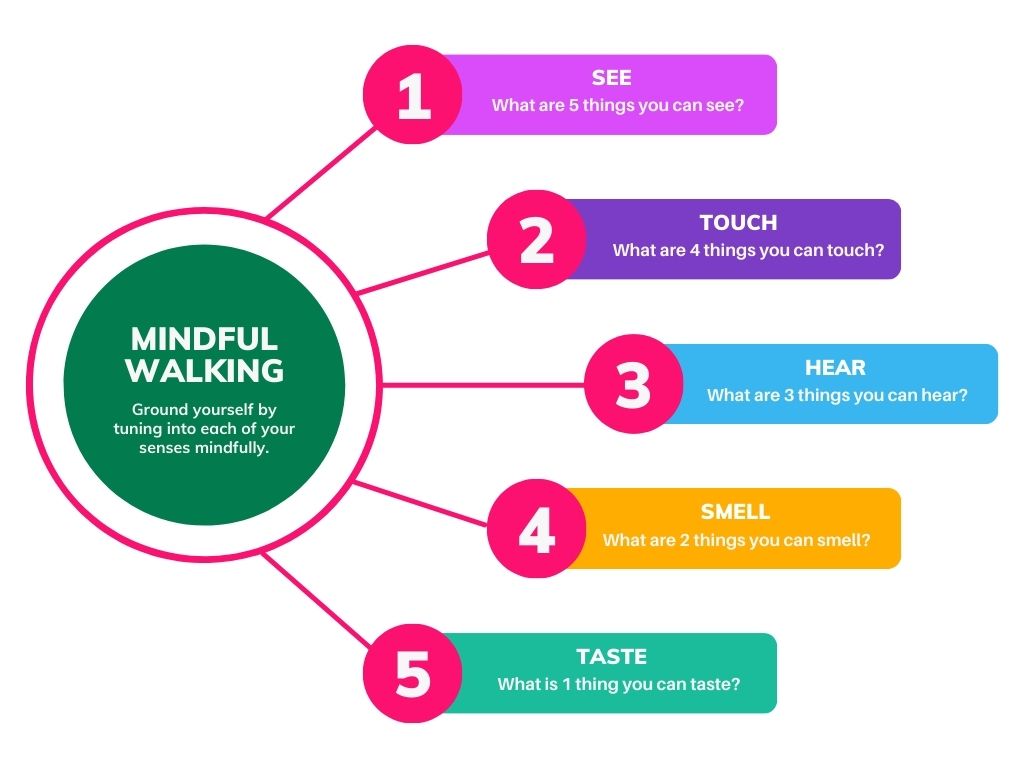One of the biggest challenges for physical and mental health today is the fact that so much of 21st-century life requires sitting and staring at screens.
In the last two decades, alongside the rise of the Internet, we have seen the emergence of an epidemic of depression, anxiety and fatigue.
While there are many reasons for this, I believe a big part of the problem is so much more time is now being spent sedentary indoors and no pill, vitamin or supplement can remedy this because it so strongly goes against our natural evolutionary biology.
Fortunately, a wealth of scientific research is showing how we can reverse the negative effects of sitting all day and reduce the long-term risks of chronic diseases caused by sedentary living.
The prescription is as simple as spending more time walking outside to break up all the sitting we have to do. And if you want to get even more benefits from these daily walks, you can start adding some relaxing mindful walking practices to the mix.
How To Practice Mindful Walking Meditation:
The practice of mindful walking involves tuning into each of your senses mindfully. Observe what you can see, hear, smell, touch and taste as you walk.

The Health Benefits of Mindful Walking Meditation:
Walking may be the most underrated form of exercise. It’s easy, inexpensive and readily accessible to just about anyone by simply putting on their shoes and stepping outside.
You can also keep it interesting by mixing it up on different days. While mindful walking and walking meditation may yield the best health benefits for stress management and relaxation, just going for a walk while taking a phone call or listening to an audiobook, music or podcast is a great way to be more active and get most of the benefits.
Here are just some of the many ways that walking outside can improve your physical and mental health.
1. Reduces Stress
Mindful movement such as walking can help lower stress, anxiety and depression [1]. As little as five hours a month (two 40-minute nature walks per week) has been shown to help prevent mild depression [2].
Walking in forests, parks and gardens can induce a sense of “soft fascination” that increases alpha brain wave activity [3], which helps to switch off the sympathetic nervous system (stress response) and switch on the parasympathetic nervous system (relaxation response) so you can relax and recharge.
2. Weight Loss
Light walking after a meal has been shown to boost metabolism, improve digestion, reduce bloating and lower stress levels [4]. Even 5 minutes has been found to have a significant impact on moderating blood sugar and insulin levels while also improving blood circulation and heart health [5].
Get afternoon slumps? Walking after lunch can help prevent a “glucose spike” which prevents a sugar crash later on [6] and it can give you more consistent energy if you spend most of the day sitting at work.
3. Better Mood
Walking naturally releases the feel-good neurotransmitter serotonin, which helps regulate appetite, improves learning and memory, and generally boosts mood [7]. 150 minutes of brisk walking per week could be as effective for mild depression, anxiety, and psychological distress as medication [8].
Serotonin is an important precursor to melatonin, which is released in the evening to help us to fall asleep. A brisk walk is also a good way to release endorphins, another feel-good neurotransmitter [9].
4. Reduces Fatigue
A study at the University of Georgia found that sedentary people who regularly complain of fatigue increased their energy levels by 20% and decreased their fatigue by 65% simply by engaging in regular, low-intensity walking [10].
Regular walks throughout the day could be the most effective way to reduce the negative effects that sitting all day has on your long-term health [11] and it can also significantly boost your ability to focus [12].
5. Improves Sleep
One of the most important but overlooked factors for high-quality sleep is exposure to natural light on a morning walk (through a windshield or window doesn’t have the same effect as being outside).
Taking a 10-15 minute walk outside first thing in the morning can help regulate your circadian rhythm [13]. A relaxing evening walk outside can also help to reduce exposure to blue light from screens after the sun goes down (which can suppress the release of melatonin, making it harder to fall asleep and stay asleep) [14].
6. Recharges Attention
For people working from home, a short mini-walk around the block between Zoom meetings can help boost your energy. A wealth of research into what’s now called attention restoration theory [15] has found that people with ADHD have much better concentration after walking in the forest.
It can work for anyone. A mindful walk can provoke a sense of renewal and gratitude that boosts concentration and decreases levels of stress, anxiety and aggression.
7. Heart Health
Heart disease is the leading cause of early death for men and women in North America. It is estimated that nearly half of adults have high blood pressure and only 1 in 4 have it under control. Taking a 30-minute walk each day may reduce blood pressure by as much as medication [16].
Spending time walking in a park or having contact with nature through gardening also positively impacts blood pressure, cholesterol, lowers heart rate, and reduces the stress hormone cortisol [17].
8. Increased Longevity
A recent study found that people who took 7,000 steps per day had a 50-70% lower risk of dying from all causes during an 11-year follow-up, compared to those who took fewer steps [18].
The average person in North America takes around 5,000 steps per day. Adding a 20-minute walk can increase steps by 50% and have a significant effect on health and well-being. Taking 8,000 steps per day is considered ideal and the benefits tend to taper off after 10,000 steps [19].
9. Nature Therapy
We have an important relationship with trees. We breathe in oxygen and breathe out carbon dioxide while they clean the air for us by absorbing our carbon dioxide and producing fresh oxygen for us to enjoy.
In the forest during the summer, you will inhale natural aromas that trees produce called phytoncides, which have been shown to help asthma, reduce stress hormones, improve concentration and boost the immune system after only a 20-minute walk [18].
10. Relaxation
When you’re feeling stressed, anxious and stuck in a negative pattern of rumination taking a short walk may be the easiest way to relax and shift into a better mood. A 15-minute walk in the woods was found to boost people’s relaxing alpha brainwave activity by levels equivalent to meditation [20].
Cultivating your love, appreciation and gratitude toward the natural world has also been shown to help reduce anxiety and depression [21].
Learn More About The Benefits of Mindful Walking Meditation
In the last decade, there has been a lot of interest in mindful walking and walking meditation in the form of forest bathing, which is a loose translation of the Japanese term Shinrin-Yoku.
The forest bathing movement has spread across the world and resulted in a lot of interest in scientific research into mindful walking and nature therapy.
I’ve put together a list of my favourite forest bathing documentaries that are a great way to learn more about the power of sensory immersion in nature to improve our health and well-being.
- 10 Sustainable Travel Trends Driving The Future of Tourism - March 9, 2025
- 10 Tips To Sell Out Your Transformational Retreats In 2025 - February 20, 2025
- Build 10 Habits That Free Up Your Time With Mindful Coaching - February 11, 2025





